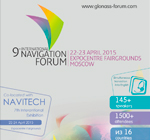Kupervasser Oleg

Moscow Institute of Radioengineering, Electronics and Automation in 1989; the PhD, at Weizmann Institute of Science, Isral in 1999. He has a Certification in Bioinformatics (ATLAS College, 2002). He worked as scientist for Technion, in Haifa Israel, between 2005 and 2008; as Consultant of Rafael, Haifa, between 2005 and 2008; he worked at the Moscow State University between 2008 and 2010. He was been Algorithm Group Leader of Transas Group of Companies, in Moscow for the years 2011–2012 and he worked at LG Technology Center or Moscow in 2011; he is also Owner of Transist Video LLC, Skilkovo, Moscow in 2012. He awarded the following prizes: Skolkovo Project Participator Association, 2012; included in tne new 30th Pearl Anniversary Edition of “Marquis Who’s Who in the World”, 2013. His achievements are: resolution of the basic paradoxes of physics; the pole solution in formation of Saffman—Taylor fingers and the flame front propagation; patent for a continuum solvent model: DISOLV program—algorithm, implementation and validation; research in visual—navigation algorithm; design of a server for decomposition of a protein structure on a set of closed loops. His avocation are the human history and the futurology
Выступления:
Nowadays availability of the GPS signal is necessary condition for UAVs operating. Signal failure or its deliberate suppression makes it impossible to determine the coordinates accurately, and, as a result, to accomplish a desired track flight. The use of inertial navigation systems also doesn’t solve the problem completely because of increasing errors, precision products are costly and have big weight. Solutions existing at the market (GPS/INS) are not autonomous are not noise-proof. The lecture suggests to solve the problem of ensuring the autonomy of UAVs in the absence of satellite navigation signals on the basis of alternative data sources: image information from onboard daytime and infra-red photo/video cameras and terrain data (potos and relief). The lecture suggests also simplified commercial video navigator for airborne unmanned ground vehicles control





